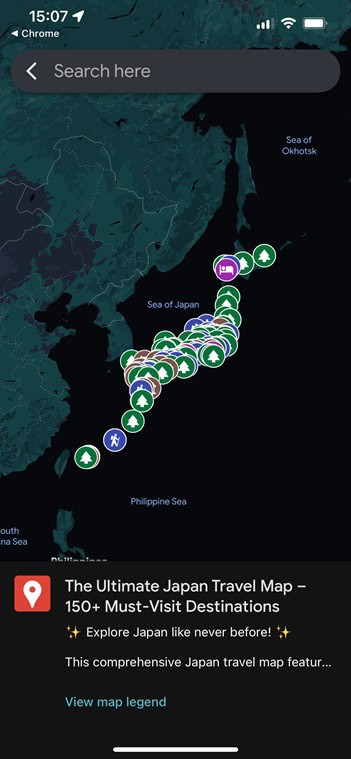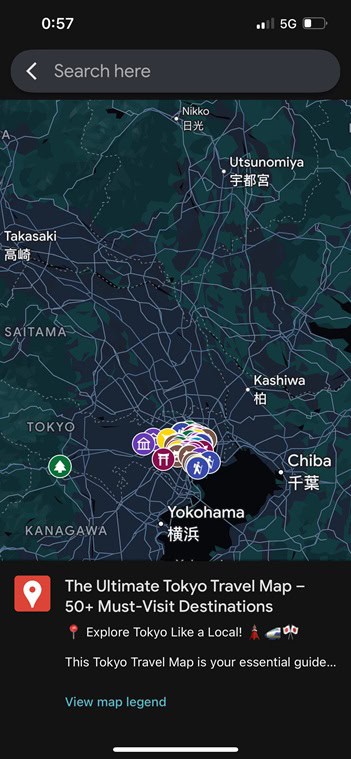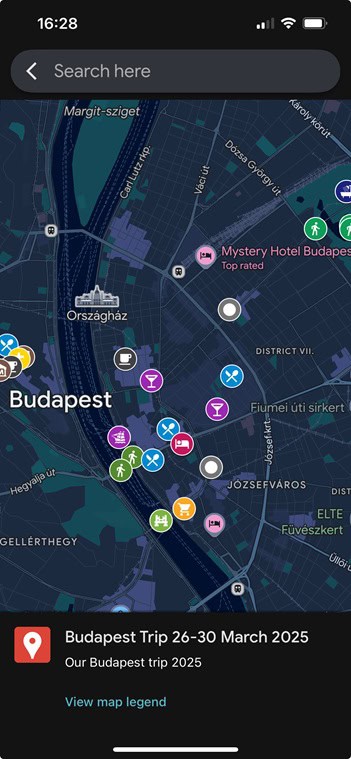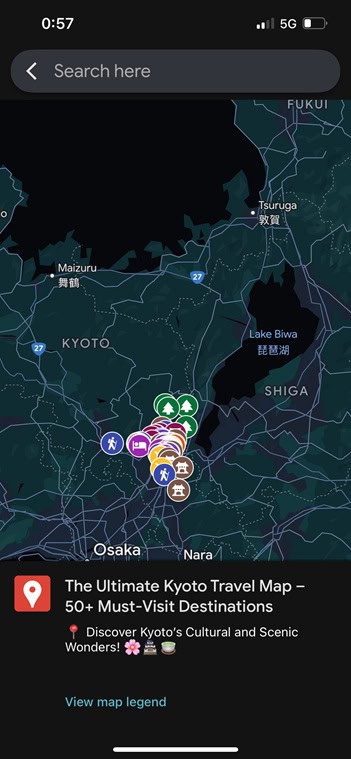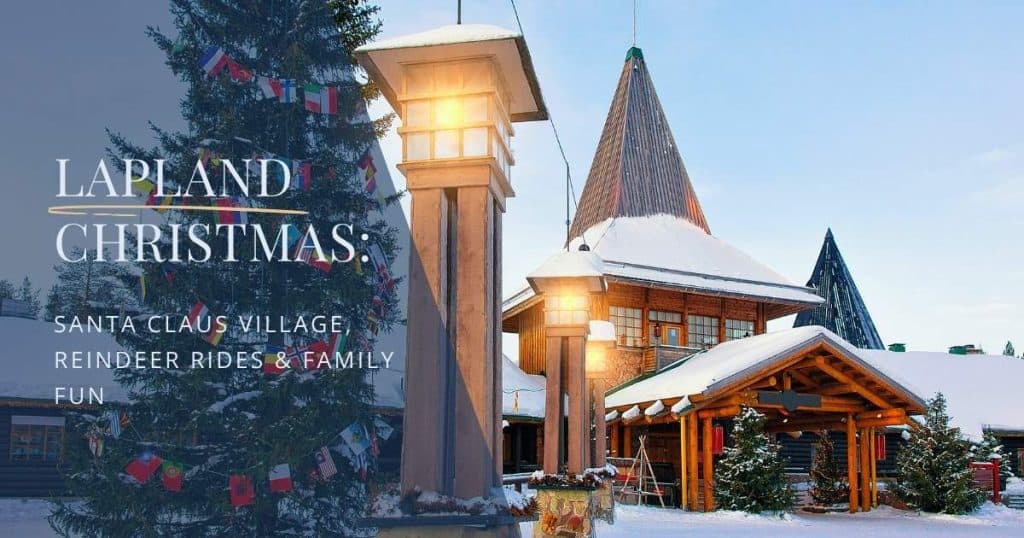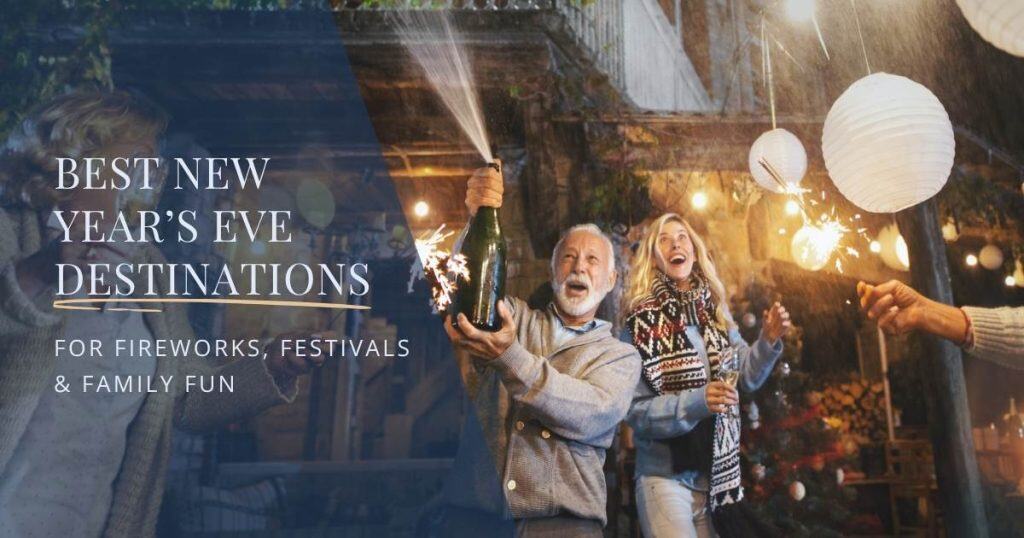Introduction: The Magic of Japan’s Festival Culture
In Japan, a festival isn’t just an event—it’s an expression of joy, history, and deep-rooted community spirit. From centuries-old religious ceremonies to neon-lit parades and snowy wonderlands, Japan’s matsuri (festivals) offer something truly magical for every kind of traveler.
Whether you’re a curious cultural explorer seeking ancient rituals or a family looking for fun, immersive experiences, Japan’s festival calendar is a treasure map of unforgettable moments. You’ll find everything from delicate cherry blossom celebrations in spring to fiery floats in summer and glittering snow sculptures in winter.
In this guide, we’ll walk you through when and where to catch Japan’s most iconic festivals—and how to make the most of them while traveling smart and stress-free.
TL;DR (Too Long; Didn’t Read)
Japan’s festival calendar is packed year-round: spring cherry blossoms, Kyoto’s Gion Matsuri in summer, samurai parades in autumn, and Hokkaido’s snow wonders in winter. Most are free, family-friendly, and easily accessible by train. Book hotels early, use Omio or a JR Pass for transport, and budget smartly with Wise and TravelSpend. Whether you’re a family, couple, or cultural explorer, there’s a festival waiting to transform your trip into an unforgettable memory.
Get Your FREE London Travel Map + 5 Must-Have Travel Resources!
Plan smarter, stress less, and make every trip unforgettable with these exclusive tools—100% FREE!
📩 Sign up now & download instantly!

Spring Festivals (March to May) – Blossoms, Parades & Renewal
Hanami – Late March to Early April (Nationwide)
When spring arrives, all of Japan seems to exhale and rejoice. Hanami, or cherry blossom viewing, isn’t just about admiring flowers—it’s a cultural tradition that brings friends and families together under blooming sakura trees.
Best Places:
- Ueno Park, Tokyo – Over 1,000 cherry trees and evening illuminations.
- Maruyama Park, Kyoto – Traditional vibe, great food stalls, and picnicking spots.
- Hirosaki Castle, Aomori – One of Japan’s most beautiful sakura displays with floating petals in the castle moat.
Tips:
- Check the sakura zensen (bloom forecast) online before your trip—it varies by region.
- Arrive early to secure a good spot for your picnic.
- Convenience stores sell seasonal hanami bento sets—perfect for a casual feast under the trees.
Family tip: Pack a simple “hanami picnic kit” (light ground sheet, wet wipes, reusable cups, and snacks), arrive early for shade, and choose spots near restrooms. Many popular parks have wide, stroller-friendly paths—set up close to an exit and plan a mid-morning stretch break for little legs.
Klook.comTakayama Spring Festival – April 14–15 (Gifu Prefecture)
In the preserved townscape of Takayama, spring feels like stepping back in time. The Sanno Matsuri is one of Japan’s most elegant festivals, featuring elaborately decorated floats (yatai) paraded through narrow streets by locals in traditional attire.
Why Visit:
- The floats are adorned with intricate carvings and moving mechanical dolls.
- Evening processions are beautifully illuminated.
- The town itself, nestled in the mountains, makes for a serene escape from the cities.
Sanja Matsuri – Mid-May (Tokyo, Asakusa)
Held in honor of the founders of Senso-ji Temple, Sanja Matsuri is one of Tokyo’s liveliest and most energetic festivals. Over 100 mikoshi (portable shrines) are carried through the streets, with chanting crowds, dancing, and more street food than you could sample in one visit.
Family tip: While it can get very crowded, morning visits tend to be more manageable for families with small kids.
Planning hanami across cities? See our Japan Bookings Hub for JR Pass, Suica and stays.Summer Festivals (June to August) – Lanterns, Fireworks & Folklore
Gion Matsuri – July (Kyoto)
Perhaps Japan’s most iconic festival, Gion Matsuri is a month-long celebration of Kyoto’s heritage and resilience. Its highlight, the Yamaboko Junko parade on July 17, features towering, ornate floats wheeled through Kyoto’s ancient streets.
What makes it special:
- The festival dates back to the 9th century.
- Locals open their historic homes to visitors, displaying traditional heirlooms.
- At night, streets are lined with yatai (food stalls) selling yakitori, kakigori (shaved ice), and fresh melon pan.
When to book: Hotels near central Kyoto (Shijo/Karasuma, Gion, Kawaramachi) routinely sell out 6+ months before the main parade. If you’re booking later, try Kyoto Station or along the Hankyu/Keihan lines for quick access.
Where to Stay in Kyoto During Gion Matsuri
Book early—central Kyoto sells out months ahead of the July parades. Prioritize walkable access to Shijo-dori and the Yamaboko float routes to minimize crowds and transit time.
- Shijo/Karasuma: Closest to the Yamaboko Junko parade and evening street festivities.
- Gion/Higashiyama: Historic streets, easy access to night illuminations and food stalls.
- Kawaramachi/Pontocho: Central dining + river breeze; great for post-parade dinners.
- Air conditioning & blackout curtains (humid July nights).
- Flexible cancellation in case of weather changes.
- Early check-in / luggage storage for parade-day timing.
- Families: Modern hotels or serviced apartments near Shijo/Kawaramachi for easy stroller access.
- Cultural explorers: Traditional ryokan or machiya stays in Gion/Higashiyama.
- Couples: Boutique riverside stays near Pontocho for evening dining.
Pro tip: If central rooms are sold out, look in Kyoto Station or along the Hankyu line (e.g., Omiya) for quick train access to parade areas.
Tenjin Matsuri – July 24–25 (Osaka)
A summer spectacle that blends tradition with over-the-top energy. The Tenjin Matsuri celebrates the deity of scholarship and features costumed boat processions along the Okawa River, followed by fireworks that light up the night.
Why go:
- It’s one of Japan’s “big three” festivals.
- The river procession is like a floating stage, with drumming and dancing.
- Fireworks finale makes it a hit with all ages.
Traveling with kids? Bring noise-cancelling headphones for sensitive ears and arrive early to secure riverside seating.
Tenjin Matsuri: Smart Logistics & Pre/Post Experiences
Reserved grandstand tickets for Tenjin Matsuri are typically released via official/local channels and may sell out quickly. While you secure your viewing plan, book helpful add-ons and nearby experiences to make the day smoother.
- City transfers and airport trains to avoid last-minute stress.
- Osaka river cruises (non-festival) on other nights for skyline views.
- Yukata/kimono rental for daytime festival photos.
- Guided food walks near Tenjinbashi-suji or Dotonbori for pre/post parade dining.
- Arrive early for riverside spots and follow staff guidance during processions.
- Use metro/IC cards to bypass road closures and crowd surges.
- Pack light layers; nights by the Okawa River can feel cooler.
Note: If official reserved seating is announced for your dates, add it to your plan immediately; otherwise pick a riverbank section early and stay flexible.
Aomori Nebuta Matsuri – Early August (Aomori, Tohoku)
Famous for its glowing warrior lanterns, the Nebuta Matsuri is both breathtaking and steeped in regional folklore. Each night, massive lantern floats—crafted from washi paper and depicting samurai, dragons, and mythic heroes—are paraded through Aomori’s streets.
Festival features:
- Performers dance in traditional haneto costumes—visitors are welcome to join in.
- Daily fireworks and drum performances.
- Float-making exhibitions and cultural workshops during the day.
This is one of Japan’s most creative and visually stunning festivals—and worth the journey north.
Nebuta Matsuri: Logistics, Participation & Nearby Experiences
Reserved seating and haneto participation details are typically handled locally/officially. While you confirm those, lock in add-ons and experiences to round out your Aomori stay.
- Aomori day trips (Hirosaki, Oirase Gorge, Hakkoda) for non-parade hours.
- City transfers/rail passes to simplify arrival and late-night returns.
- Cultural walks and food tastings to sample Aomori apples and seafood.
- Parade corridors get crowded—arrive early and expect barricades/staffed crossings.
- If dancing as a haneto, you’ll need the proper costume and bells; check same-day rental instructions locally.
- Bring a light rain layer and comfortable shoes; you’ll be on your feet for hours.
Note: When the city releases official seat sales or haneto instructions for your dates, follow those directly. Use the platforms above for everything else you can pre-book around the parade.
Sumida River Fireworks Festival – Late July (Tokyo)
Tokyo’s biggest fireworks festival turns the skies over the Sumida River into a work of art. Expect synchronized displays, millions of spectators in summer yukata, and food stalls galore lining the riverbanks.
Tips for enjoying it:
- Go early—locals start securing spots from mid-morning.
- Bring a mat, snacks, and patience.
- Book a hotel with a riverside view for a relaxed, crowd-free experience.
Need More Help Planning Your Trip?
Autumn Festivals (September to November) – Harvest, Heritage & Color
Kishiwada Danjiri Matsuri – Mid-September (Osaka Prefecture)
Looking for a rush of adrenaline? The Kishiwada Danjiri Festival features teams of men pulling towering wooden floats at breakneck speed through narrow streets—sometimes making impossibly sharp turns.
Why it’s unforgettable:
- It’s thrilling, loud, and a little chaotic—in the best way.
- The craftsmanship of the danjiri floats is stunning.
- Best viewed from elevated vantage points for safety and full visual impact.
Great for adventurous couples or teens seeking something unique and exciting.
Jidai Matsuri – October 22 (Kyoto)
For a quieter, more dignified experience, the Jidai Matsuri is a grand historical pageant that marches through Kyoto’s streets. The procession features over 2,000 participants in costume, representing different eras from Kyoto’s 1,200-year history.
Perfect for:
- Cultural travelers and photographers.
- Families with older children learning about Japanese history.
- A slower-paced, reflective festival after the summer’s high-energy events.
Shuki Taisai Grand Autumn Festival – Early October (Nikko)
Step into a world of samurai pride at Nikko Toshogu Shrine, where more than 1,000 participants don traditional armor and reenact a sacred procession. With the vibrant autumn foliage as a backdrop, it’s a breathtaking blend of nature and ceremony.
Tips:
- Pair it with a day trip to Lake Chuzenji for leaf-peeping and scenic boat rides.
- Dress in layers—Nikko can be cool in autumn.
Winter Festivals (December to February) – Snow, Light & Tradition
Sapporo Snow Festival – Early February (Hokkaido)
Held in Japan’s northernmost capital, the Sapporo Snow Festival transforms the city into a frozen wonderland. Towering snow sculptures, some as large as buildings, line the streets of Odori Park, while ice sculptures glisten in the Susukino district.
Why it’s a must:
- The snow art is incredibly detailed—featuring anime characters, world landmarks, and intricate historical scenes.
- Fun winter sports areas for kids and snow slide zones.
- Nighttime illuminations give the entire city a magical glow.
Pro Tip: Stay near Odori Station for easy walking access to the displays. And don’t forget your thermal layers—temperatures drop well below freezing!
When to book: Odori Park/Susukino stays often fill 4–6 months in advance of the Snow Festival. If central rooms are gone, look one subway stop away for better rates and easy underground access.
Family tip: Aim for 60–90-minute outdoor blocks with warm-up breaks indoors; base near Odori and use underground walkways to move between zones. A baby carrier works better than a stroller on snowy paths. Look for kids’ play areas/snow slides, and pack hand warmers, waterproof boots, and a thermos for hot drinks.
Where to Stay for the Sapporo Snow Festival (Odori Park Area)
For effortless festival days, base yourself near Odori Park (main snow sculptures), Susukino (night ice displays), or Sapporo Station (easy transit + underground walkways in freezing temps). Book early—top locations sell out months ahead.
- Odori: Steps from the main sculptures; perfect for families and photographers.
- Susukino: Night ice displays + dining; great for couples and foodies.
- Sapporo Station: Underground access to Odori, fast JR/airport links, more inventory.
- Easy access to the Chikaho underground walkway (warmer walks to Odori).
- Hearty breakfasts + nearby convenience stores for quick warm-ups.
- Luggage storage / early check-in for sculpture-viewing days.
- Families: Station/Odori hotels with larger rooms and on-site dining.
- Cultural explorers: Odori/Susukino stays for daytime sculptures + night illuminations.
- Couples: Boutique options near Susukino for evening strolls and restaurants.
Pro tip: If Odori is sold out, look one stop away on the Tozai or Namboku lines for quick metro hops and better rates—still easy access to the snow and ice sites.
Yokote Kamakura Festival – Mid-February (Akita Prefecture)
Far from the tourist crowds, this festival in Yokote City invites you into the heart of a true winter tradition. Small igloo-like kamakura huts are built from snow and illuminated with candles. Children sit inside, offering warm rice cakes and amazake (sweet rice wine) to passing visitors.
Why families love it:
- Interactive, cozy, and visually enchanting.
- Children can talk to local kids in the huts and exchange cultural greetings.
- Great for slow travelers seeking meaningful local experiences.
Tip: Bring a tripod—this festival is a dream for nighttime photography.
Discover Our Ultimate Collection of Travel Maps
Nabana no Sato Winter Illumination – Mid-November to March (Mie Prefecture)
This botanical garden becomes one of Japan’s brightest and most romantic destinations in winter. Over 5 million LED lights create glowing flower fields, tunnels of light, and themed zones based on famous Japanese landscapes.
Highlights:
- The 200-meter light tunnel is the main attraction.
- Each year introduces a different theme—from Mount Fuji to historic villages.
- It’s less about crowds and more about peaceful ambiance and awe.
Perfect for couples, or families wanting a low-energy yet visually stunning winter experience.
Snow festival dates fill fast. Head to the Bookings Hub for transport, JR Pass and Odori-area stays.Build a Stress-Free Japan Festival Itinerary (Free & Custom)
Ready to turn these festival tips into a day-by-day plan? Our AI itinerary builder creates a personalized schedule around your dates, cities, and pace—from Kyoto’s Gion Matsuri to Aomori’s Nebuta and Sapporo’s snow wonders. Great for families (stroller-friendly routes, nap windows) and cultural explorers (must-see parades, quiet hours, local eats).
- Smart sequencing between cities + realistic travel times
- Suggestions for rail passes, transfers, and hotel zones near venues
- Backup options for weather and crowd-heavy times
✨ No spreadsheets—just a tailored festival-hopping plan you can follow:
Festival Planning Tips for Travelers
Japan’s festivals are unforgettable—but they can also be overwhelming if you’re not prepared. Here’s how to enjoy them smoothly and stress-free:
- Book Early: Popular festivals (like Gion Matsuri or Sapporo Snow Festival) draw global visitors. Secure accommodations 3–6 months in advance.
- Wear the Part: In summer, join in the fun by renting a yukata—many shops near festivals offer walk-in rentals with hair styling.
- Bring Cash: Many festival vendors don’t accept credit cards. Budget accordingly and use ATMs at convenience stores if needed.
- Use Public Transportation: Roads are often closed during events. Trains and subways are faster and more reliable.
- Plan Your Route: Download travel apps like Google Maps, Japan Transit Planner, or NAVITIME in advance.
- Stay On Budget: Festival travel can get expensive. Use Wise for real-time currency exchange and to transfer funds internationally with minimal fees—it’s especially helpful if you’re traveling as a group or planning multiple stops.
- Consider Ear Protection for Kids: Especially during firework shows or parades with loud drumming (check our noise cancelling devices suggestions here).
- TravelSpend: to track food stall splurges, transport, and shared group costs in real time—handy during crowded festival days.
- Respect festival traditions: follow crowd flow, avoid blocking parade paths, keep noise down near shrines/priests, ask before close-up photos, and clean up picnic spots completely.
Getting Between Japan’s Festival Cities (Smart Transport Tips)
Hopscotching between Kyoto, Osaka, Aomori, and Sapporo is easy with Japan’s rail network. Compare routes and tickets in one place, then lock in a JR Pass if you’re doing multiple long-distance rides.
- Klook: Compare shinkansen, regional trains, airport transfers, and passes in one place—great for festival-hopping.
- JR Pass: Worth it if you’ll take 2–3 long intercity trips (e.g., Tokyo ⇄ Kyoto ⇄ Aomori/Sapporo).
- Suica IC Card: Tap-on travel for metros, city buses, and quick snacks at convenience stores.
- Check parade times first, then pick trains that avoid peak crowds.
- Reserve shinkansen seats for families and during festival weekends.
- Build buffer time on travel days—popular routes can be busy.
Pro tip: If you’re visiting multiple regions for festivals (e.g., Kyoto’s Gion → Osaka’s Tenjin → Aomori’s Nebuta), a JR Pass can pay for itself quickly—use Klook to compare schedules and reserve seats in advance.

Test Your Travel Smarts with Our Quizzes!
Think you know your way around the world? From cultural traditions to hidden gems, our short and playful travel quizzes are the perfect way to challenge yourself, learn something new, and maybe even spark your next adventure. Great for anyone who loves a bit of travel trivia fun!
Memorable Mentions
Some festivals didn’t make the seasonal list but are still worth considering—especially for travelers looking to go beyond the usual paths:
- Obon Festival (Mid-August, Nationwide)
A deeply spiritual Buddhist event honoring ancestors, with Bon Odori dances and lantern floating ceremonies. Tokyo’s Mitama Matsuri at Yasukuni Shrine is particularly moving. - Otaru Snow Light Path Festival (Early to Mid-February, Hokkaido)
A romantic canal-side event that overlaps with the Sapporo Snow Festival. Think glowing lanterns reflected on snowbanks and peaceful strolls under twinkling skies. - Hadaka Matsuri (February, Okayama)
Not for the faint of heart—participants in minimal clothing (fundoshi) jostle for sacred sticks in freezing temperatures. It’s rowdy, historic, and extremely photogenic. - Kurama Fire Festival (October 22, Kyoto)
In the quiet mountain town of Kurama, men carry blazing torches through steep village paths in one of Japan’s most dramatic nighttime parades.
Japan Bookings Hub: Transport, Passes & Stays
Planning multiple festivals or cities? Lock in trains, JR passes, and stays early—peak dates sell out fast.
Tip: For festival-hopping (e.g., Kyoto → Osaka → Aomori → Sapporo), price out individual shinkansen vs. a JR Pass—Klook and Trip.com show current availability and routes.
Conclusion: Celebrate Japan’s Seasons Through Its Festivals
Festivals are more than a cultural experience in Japan—they’re a way of life. Each matsuri, from intimate candlelit winter gatherings to grand summer parades, reflects the spirit of the region and season.
For families, these festivals become moments of bonding, wonder, and spontaneous joy. For cultural explorers, they offer immersive insight into Japan’s values, rituals, and communal pride. And for all travelers, they’re vivid memories in the making—moments that live on long after the lanterns are dimmed or the cherry blossoms have fallen.
So why not plan your next trip around a festival? Let the rhythm of Japan’s seasons guide your adventure.
Plan Your Ultimate Japan Trip
Frequently Asked Questions About Japan’s Festivals
Q: When is the best time to visit Japan for festivals?
A: Japan’s festival calendar runs year-round. Spring (March–May) is ideal for cherry blossom hanami, summer (July–August) offers large parades and fireworks, autumn (September–November) features historical and harvest celebrations, and winter (January–February) is perfect for snow and light festivals.
Q: Are Japan’s festivals family-friendly?
A: Yes, most are. Festivals like Hanami, Gion Matsuri, and the Sapporo Snow Festival are great for children. For loud or crowded events, arrive early or bring ear protection for younger kids.
Q: Do I need tickets to attend Japanese festivals?
A: Most festivals are free and open to the public. However, some activities—like reserved seating for parades, entry to certain festival museums, or guided tours—require tickets, which can be booked through trusted platforms like GetYourGuide or Viator.
Q: How should I budget for a Japan festival trip?
A: Costs vary depending on location and season. Budget for transport, food stalls, and accommodations (which may be more expensive during peak times). Apps like TravelSpend help track expenses in real time.
Q: What is the easiest way to travel between festival cities?
A: Japan’s rail system is the most reliable option. Consider a JR Pass for multi-city trips or use Omio to compare trains, buses, and domestic flights when planning your itinerary.
Q: Can visitors participate in Japanese festivals?
A: Yes, some festivals encourage participation. For example, Nebuta Matsuri in Aomori welcomes visitors to join the haneto dancers, while Obon festivals often invite tourists to dance in Bon Odori circles.
📌 Love cultural travel? Explore more ideas on Pinterest →




